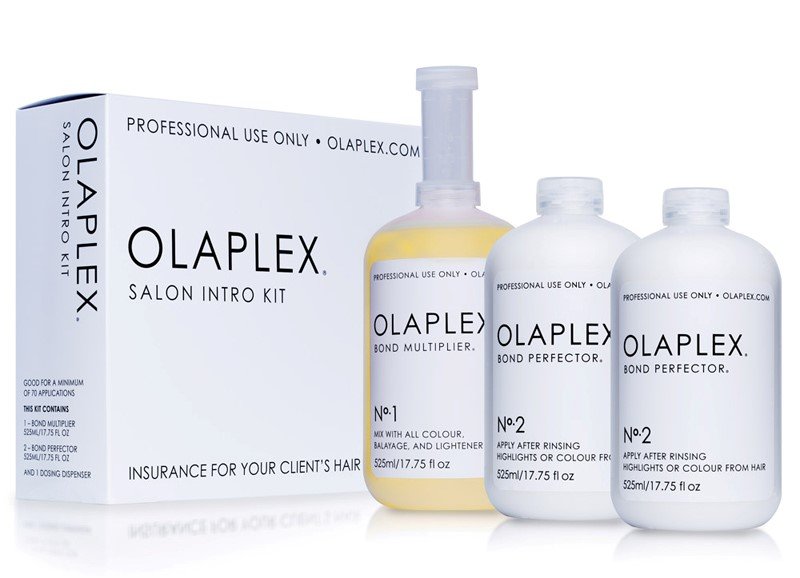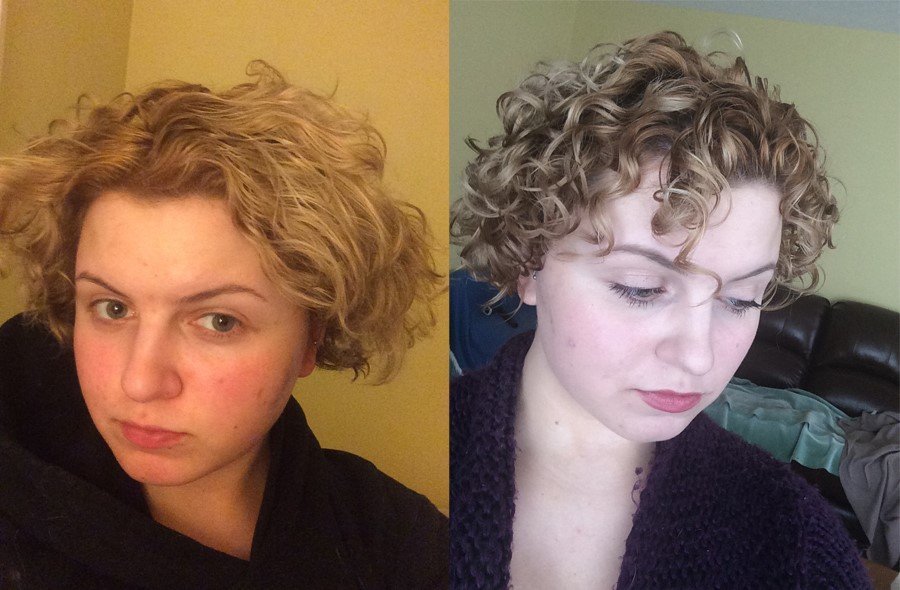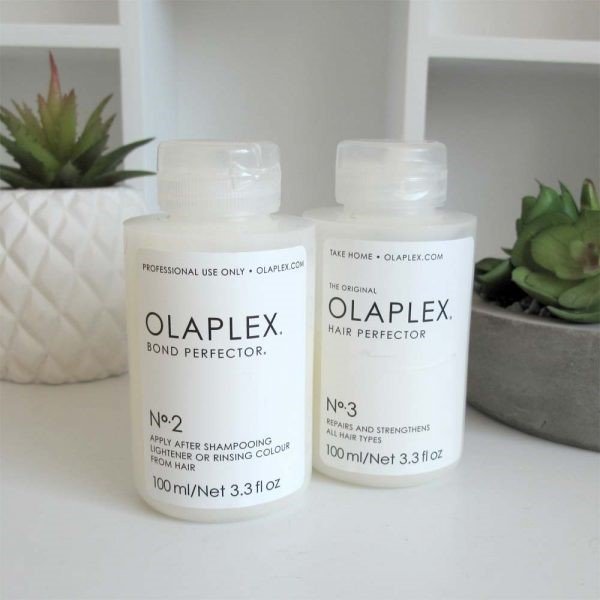WHAT IS OLAPLEX TREATMENT?
Olaplex Treatment is a line of hair repair,”bond construction” remedies that’s getting heaps of buzz in the hair area, particularly with those who have ruined hair from excessive bleach. It’s available in a few forms — Olaplex could be mixed in with bleaching products to minimise damage,or it can be utilised as a individual treatment. Here’s the science behind how it”fixes” disulfide bonds in your hair.

The active ingredient in Olaplex is a compound called bis-aminopropyl diglycol dimaleate. This is a slightly ambiguous name, but we are confident that it matches this structure in the patent:

WHAT DOES OLAPLEX CLAIM TO DO?
Olaplex claims to “reconnect broken disulfide sulfur bonds from the hair.” The Olaplex Treatment is labelled a”bond multiplier”, which limits damage to hair after hair colouring.
A good deal of individuals with ruined hair have been able to find incredible effects from Olaplex. Here is our customer, who obtained her natural curl feel back with just one Olaplex treatment:

So suffice to say, it definitely does something! But is it as revolutionary as the hype makes it out to be?
HOW DOES OLAPLEX’S CLAIMS STAND UP?
BACKGROUND
First up, a bit of basic hair chemistry. we have posted about hair growth, structure and chemistry and here’s a quick recap:
Hair contains lots of keratin proteins, which has the amino acid cysteine. Cysteine is special because it contains a sulfur (S) atom. Normally, two sulfurs will join together to form a disulfide bond (S-S), creating a link between two proteins:
All these proteins holding hands is partly responsible for your hair’s in general shape and strength. When hair is permed or straightened, these bonds have been intentionally broken to two SH (“loose thiol”) groups, then reformed following the hair is pulled into its new shape. Re-forming those bonds generally requires a couple of days (consequently not washing your hair for a couple of days after perming, as it warps the shape).
But, that Is not the Only thing that may break disulfide bonds — high pH lye, repeated vulnerability, exposure to sun, hair styling and chemical treatments such as hair damage will even break disulfide bonds and also lead to diminished damaged hair.
The peroxide utilized in Bleaching will help repair disulfide bonds… but may also paradoxically stop them From forming, by minding the SH with a sulfate group, thus the additional harm:
THEORETICAL MECHANISM
Many people were initially sceptical of these claims, since so many other hair products promise to do anything else and don’t. However, the patent holders have been academic chemists with extremely striking reputations — Craig Hawker is to the Editorial Board with lots of high impact factor chemistry journals, also has 17 Angew. Chem. Papers in his resume, which will be a pretty BFD in the chemistry world. I wished to vet that item completely!
The patent has a surprising quantity of detail into the mechanism of how it’s supposed to work. The brief story isthe two endings of bis-aminopropyl diglycol dimaleate form bonds with the sulfurs, making an artificial, extended disulfide bridge. These respond with an SH group each in a Michael response to form covalent bonds like so: And so a new disulfide link is formed between the 2 sulfurs, which makes the hair more powerful. This happens fairly fast — unlike with hair straightening and perming, these responses will occur quicker than the peroxide capping reaction, meaning hair damage during colouring is drastically reduced. Pretty cool, huh
IN PRACTICE
It Is neat that there’s a Scientifically legit explanation for the way Olaplex Treatment could work, but does this really happen this way in the real world? You will find no published independent scientific trials nonetheless , apart from thousands of rave reviews and before-and-after photos, which are pretty striking. There’s also a trendy side-by-side contrast in the American Board of Certified Haircolorists Newsletter: they shampooed hair after Olaplex treatment, mineral oil, b3 Brazilian Bond Builder or colorpHlex. Olaplex comes out on top by far, although the other proprietary treatments make similar statements (reinforces hair from the interior, repairs bonds).
Olaplex treatment is now routinely used in bleaching treatments, and can get black hair in one Session, with no hair becoming too brittle!
WHAT ARE THE DIFFERENT OLAPLEX PRODUCTS FOR?
There are 5 different Olaplex products now, and they’re imaginatively numbered 1 to 5:
OLAPLEX NO. 1 BOND MULTIPLIER
Olaplex No. 1 has the highest concentration of the active ingredient. It is basically just water, bis-aminopropyl diglycol dimaleate and preservatives.
We’ve seen sources that state that it has 80 percent or 100% of the active ingredient, but in case the ingredients list follows the usual rules, it can’t comprise more than 50% (because the product has to contain more water). Additionally, it is very liquidy, which might not be the feel we anticipate for this compound, although it’s actually only a guess.
There are plenty of ways that Olaplex recommend using No. 1: blended in with bleach to reduce harm, blended in with gloss, toner or colour, or diluted and used as the very first step in a standalone treatment. There is a useful mixing chart on their website .
Ingredients: Water (Aqua), Bis-Aminopropyl Diglycol Dimaleate, Phenoxyethanol, Sodium Benzoate.
OLAPLEX NO. 2 BOND PERFECTOR
Here is the next “professional use only” step that is intended to fix any bonds missed from Olaplex No. 1.
Olaplex’s educational Materials all highlight that Olaplex No. 2 (and 3 as well) are bail contractors, not elimination products — when left in, they will not cause your hair feel sterile or soft (in actuality, they make your hair feel rigid and snaggy, since we understand today from our experience).
Instructions:
- Best applied to towel-dried hair
- Leave for at least 10 minutes (20+ minutes if possible)
- Shampoo and condition afterwards
- Shampoo before the Olaplex treatment as well if hair has build-up (oils, silicones, minerals)

OLAPLEX NO. 3 HAIR PERFECTOR
Olaplex No. 3 is the take-home Olaplex Treatment. It’s the same ingredient listing to Olaplex No. 2, but using a slightly lower concentration of the active component (12.5% instead of 15 percent according to your sources).
We are not convinced that a 1/6th reduction is a massive enough difference to justify it being labelled a very different product with various applications — particularly when both 2 and 3 are designed to be used on towel-dried own hair, that typically contains sufficient water to dislodge it far more than just 1/6th. From our perspective, it just sounds to be an artificial attempt at differentiating “salon-only” “professional use” and consumer products, which will be something that the hair industry actually likes doing.Anyway, the usage directions are the same as Olaplex 2:
- Best applied to towel-dried hair
- Leave for at least 10 minutes (20+ minutes if possible)
- Shampoo and condition afterwards
- Shampoo before the Olaplex treatment as well if hair has build-up (oils, silicones, minerals)
- Use once a week, or 2-3 times a week for damaged hair
OLAPLEX NO. 4 BOND MAINTENANCE SHAMPOO
This shampoo has got the freshest components listing we have ever experience at a shampoo, and we do not know why any item needs as many ingredients.
It’s a sulfate-free shampoo, even together with bis-aminopropyl diglycol dimaleate as the 10th ingredient — mathematically this implies it cannot be higher than 10 percent, but practically speaking, and also contemplating the proportions in Olaplex 2 and 3, it’s likely much below that. The quantity of active ingredient looks somewhat too little to be relying upon this for repairing damaged hair, but that is probably the reason they brand it “care”. It does look like a pretty wonderful shampoo though.
OLAPLEX NO. 5 BOND MAINTENANCE CONDITIONER
This is a low-silicone purifier with a very long components list — now bis-aminopropyl diglycol dimaleate is ingredient number 14 (if you are still following and favorably, it’s less than 7%). Again, the quantity of active ingredient appears a bit low for utilizing it “since Olaplex”, although it does appear to be a great conditioner.
FURTHER QUESTIONS
We had a couple of questions regarding Olaplex Treatment dependent on the mechanics of how it functions — those are extremely insecure!
COULD OLAPLEX BE USED FOR PERMING?
As this technique forms disulfide bonds considerably faster than conventional methods, can Olaplex be utilized for perms where you can wash your hair immediately? We can’t see why not though maybe it has not been marketed that way since it’s less revolutionary.
WHY ARE THERE IONIC BONDS IN THE STRUCTURE?
The maleate sections of the molecule are joined to the linker by ionic bonds (the attraction between the + and – bits), rather than a covalent bond (a solid line). Covalent bonds are generally stronger than ionic bonds, and generally ionic bonds are more susceptible to being broken if there’s a lot of water and other ions around or if there are pH changes, which you’d expect with regular shampooing. Why did the inventors choose to use ionic bonds?
Is it because the ionic bonds used here are unusually strong or have slightly more angular freedom (covalent bonds are like rigid welded joints, while ionic bonds are a bit more like ball-and-socket joints)? Or is it so the effects of Olaplex will wear off faster and you’ll have to use more product? Is it planned obsolescence, so they can unveil Olaplex Permanent 2.0 in a few years time, with covalent bonds where the ionic bonds are? (It’s worth noting that the patent covers versions with covalent bonds, and currently the effects are estimated to “dissipate in a few weeks to a month” – the patent mentions “two months or more”.)
IS THERE ANY DANGER OF THE HAIR BECOMING HARDER TO REPAIR, IF IT DOES GET DAMAGED AFTER OLAPLEX?
With normal hair, the weakest list is usually the disulfide bond. When it breaks, is becomes free thiols, which can be repaired with oxygen or peroxide (very slowly and unreliably) or Olaplex (quickly and probably reliably). But what happens when Olaplex comes into the picture? We think that the ionic bond will be the weakest point, and it will left with this on the ends:
Will this act as a “cap” to stop further disulfide bridges forming, preventing further Olaplex treatments from working? From a chemical perspective, Olaplex Treatment could definitely work to repair hair in a way which no other product on the market currently does.
Established in 2012, Hera Hair Beauty salon is the one of the top hair salon Singapore when it comes to high quality and affordable hair salon Singapore. This expat hair salon Singapore is the only premium quality service provider in Singapore that provides all services one might need when it comes to hair and beauty. The Asian hairdresser Singapore and Western hairdressers Singapore and at Hera Hair salon understand how busy their clients are and this is the primary reason that paramount priority is given to providing all services ranging from hair, nails, makeup to eyebrow shaping under one roof. Being one of the best hair salon Singapore, you will enjoy the top-notch, quality assured hair services at our hair salon near me, ranging from Haircut Singapore, keratin treatment Singapore, blonde highlights, balayage Singapore, olaplex Singapore, hair extensions Singapore. We adapt international hair fashion to the needs of our international clients. Our global master colorists are well adept in creative, brunette or blonde hair or ash blonde hair colour etc and trained to create perfectly shaded blonde highlights and lowlights. Whether you are in need of a good and affordable hair salon in Singapore or need a premium class luxurious service, we cater to the needs of every individual. At Hera Hair Beauty Salon, we are proud to carry two of the world’s leading hair care product lines, KERASTASE Singapore and Kevin Murphy Singapore. All of our products are brand guaranteed. This is the main reason that we have a very high satisfaction rate, customer loyalty and recommendation.


Leave A Comment